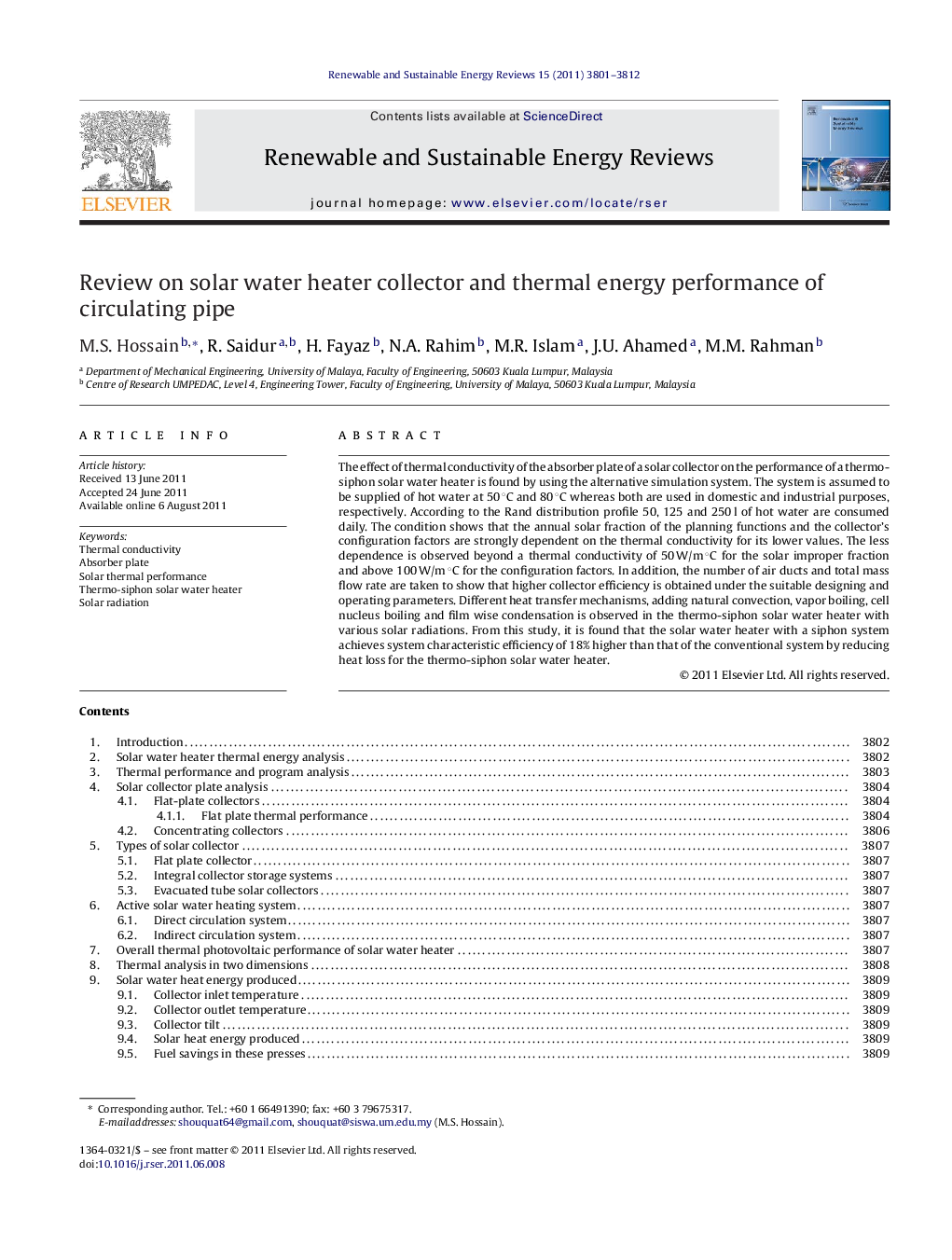| Article ID | Journal | Published Year | Pages | File Type |
|---|---|---|---|---|
| 1750839 | Renewable and Sustainable Energy Reviews | 2011 | 12 Pages |
The effect of thermal conductivity of the absorber plate of a solar collector on the performance of a thermo-siphon solar water heater is found by using the alternative simulation system. The system is assumed to be supplied of hot water at 50 °C and 80 °C whereas both are used in domestic and industrial purposes, respectively. According to the Rand distribution profile 50, 125 and 250 l of hot water are consumed daily. The condition shows that the annual solar fraction of the planning functions and the collector's configuration factors are strongly dependent on the thermal conductivity for its lower values. The less dependence is observed beyond a thermal conductivity of 50 W/m °C for the solar improper fraction and above 100 W/m °C for the configuration factors. In addition, the number of air ducts and total mass flow rate are taken to show that higher collector efficiency is obtained under the suitable designing and operating parameters. Different heat transfer mechanisms, adding natural convection, vapor boiling, cell nucleus boiling and film wise condensation is observed in the thermo-siphon solar water heater with various solar radiations. From this study, it is found that the solar water heater with a siphon system achieves system characteristic efficiency of 18% higher than that of the conventional system by reducing heat loss for the thermo-siphon solar water heater.
